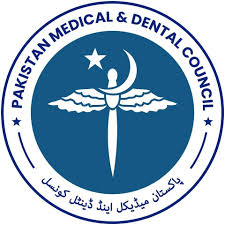Delayed speech in children of working and non-working mothers in Lahore, Pakistan: Prevalence and associated factors
DOI:
https://doi.org/10.37018/GRMX3731Keywords:
Speech delay, working mothers, non-working mothers, ToddlersAbstract
Background: Before going to school 2-3% of children have language problems and 3-6% have speech delays. This study was carried out to determine the prevalence of delayed speech in children of working and non-working mothers and to determine if speech and language development in children are affected by the working status of the mothers.
Subjects and methods: This cross-sectional study was conducted at Mayo Hospital, Services Hospital, Sheikh Zaid Hospital, Lahore College for Women University, and the University of Lahore, Pakistan. A total of 288 mothers were recruited. Among them, 144 were working women (aged 25-40, working hours 6-8 for at least 5 days a week), including all professionals, teachers, doctors, and job holders. The other group included 144 non-working women (aged 25-40 years) having both male and female children from 2 to 5 years of age (with normal developmental milestones mean age of 3.5 years). Data were analyzed using SPSS.
Results: The results showed that 44 (30.6%) children of working women and 40 (27.8%) children of non-working women had delayed speech. The overall prevalence of delayed speech in children was 29.1%. No significant relationship was found between the working status of mothers with speech delay. The socioeconomic parameter (Kuppuswami scale) of the study revealed that 29% of delayed speech children (late talkers) belonged to the upper class, while 65.5% belonged to the middle class. Of delayed speech children 41.7% lived in a nuclear family and 58.3% in a joint family system. A significant relationship between delayed speech was seen with gender, birth order, social class, and the schooling status of the child.
Conclusions: Delayed speech is significantly related to gender, birth order, and schooling status. The working status of mothers plays no significant role in the language and speech development of children in the current study.
Downloads
Published
How to Cite
Issue
Section
License
The Journal of Fatima Jinnah Medical University follows the Attribution Creative Commons-Non commercial (CC BY-NC) license which allows the users to copy and redistribute the material in any medium or format, remix, transform and build upon the material. The users must give credit to the source and indicate, provide a link to the license, and indicate if changes were made. However, the CC By-NC license restricts the use of material for commercial purposes. For further details about the license please check the Creative Commons website. The editorial board of JFJMU strives hard for the authenticity and accuracy of the material published in the journal. However, findings and statements are views of the authors and do not necessarily represent views of the Editorial Board.

















